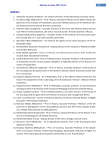Статьи журнала - Arctic and North
Все статьи: 955
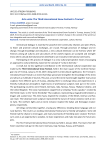
Arts unite: The Third International Snow Festival in Tromsø
Статья научная
The article is a brief overview of the Third International Snow Festival in Tromsø, January 23–26, 2019, from the perspective of international cooperation in northern Europe in the context of the world culture integration and cross-cultural dialogue.
Бесплатно
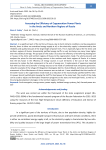
Assessing the Efficiency of Cogeneration Power Plants in the Arctic and Northern Regions of Russia
Статья научная
In a significant part of the territory of Russia, due to harsh climatic conditions and low population density, there is either no centralized energy supply at all, or the electricity supply is characterized by low reliability and quality because of the large length of power lines. This is especially typical for the Arctic and northern regions of Russia. Economically justified energy tariffs in such territories are many times higher than the statistical average. The purpose of this study is to assess the efficiency of transferring heating boiler houses in the Arctic and northern regions of Russia to the cogeneration mode. The article presents and analyses the prices for the main energy sources in the northern and Arctic regions of Russia. It is shown that the key factor in the efficiency of energy sources in such territories is the cost of fuel. Possible measures to reduce the fuel component in the cost of energy are: 1) replacement of expensive imported fuel with local fuel and 2) transfer of energy sources to the mode of combined heat and power generation. Using the example of the village of Erbogachen (Katangskiy district, Irkutsk Oblast), technical and economic assessment of the effectiveness of these measures was carried out. It was established that the transfer of the boiler house to the cogeneration mode leads to a reduction of the economically justified tariff for electric power almost twofold while keeping the tariff for heat power at the same level. The results of the study can be used to adjust and formulate investment programs at the state and municipal levels, as well as in the energy development strategies in the northern regions of Russia.
Бесплатно
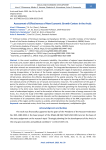
Assessment of Effectiveness of New Economic Growth Centers in the Arctic
Статья научная
In the current conditions of economic instability, the problem of regional space development in the Arctic zone, Eastern Siberia and the Far East, the regions where the main hydrocarbon and other mineral reserves are concentrated, is becoming more and more relevant. The main reserves of hydrocarbons and other minerals are concentrated in these regions. The integrated development of the mineral resource base on the principles of rational nature management, including the stages of exploration, production, processing, transportation, is the driver of the Russian regional economy development. The organization of raw materials centers (RMC) with regard to the development of energy resources and regional transport infrastructure, determines the effective development of the spatial economy. The aim of the study is to develop an integrated approach to the spatial development of the region by forming an RMC for achieving the national priority of efficient use of natural and economic resources. The achievement of the goal requires the solution of interrelated tasks, namely, the study of domestic experience in the spatial organization of regional economy; the analysis of the regulatory framework governing the functioning of specific industries in the Arctic zone, Eastern Siberia and the Far East in order to further socio-economic development of undeveloped regions, as well as the analysis of data on the current state of energy reserves in the Arctic. As a result, the study of the RMC organization indicates that their effectiveness is associated with the interaction of national and corporate interests and the development of a communication system. The interrelation of all components allows us to assess the multiplicative effect of the RMC organization on the economy of the region and the country as a whole, which determines the novelty of the work.
Бесплатно

Assessment of Industrial Gas Content in the Yamal and Gydan Oil and Gas Bearing Areas
Статья научная
In accordance with the strategic planning documents of the Russian gas industry, the development of the Yamal and Gydan oil and gas bearing regions is one of the priority tasks, as they are associated with the formation of a strategic reserve of gas resources and the creation of new gas production centers. The article analyses the spatial distribution of natural gas reserves in the oil and gas bearing areas of the Arctic region and concludes that the distribution of free gas resources is uneven both by section and by area. Some oil and gas bearing areas are characterized by a weak degree of geological and geophysical study. Depletion of the base fields in the Pur-Taz and Nadym-Pur oil and gas bearing areas raises the question of shifting the raw material base of the gas industry to the hard-to-reach areas of Yamal and Gydan, including the waters of the Kara Sea, the Ob, Taz and Gydan Bays. The paper provides a quantitative assessment of the level of commercial gas content of the Yamal and Gydan oil and gas bearing areas, including in the context of oil and gas bearing regions. It was determined that based on the technology of field development, processing and transportation scheme when assessing the prospects of development and options for monetization of gas resources, a zone of pipeline transport and a zone of liquefied natural gas are distinguished. Taking into account the current economic conjuncture of Arctic natural gas reserves development, it is reasonable and promising at this point in time to expand the resource base by developing satellite fields in Yamal and Gydan oil and gas bearing regions, which already have developed production, processing, transport and social infrastructure, as well as through additional exploration of discovered and developed fields and deposits.
Бесплатно

Assessment of Long-Term Socio-Geo-Ecological Consequences of Lead-Zinc Ore Mining on Vaygach Island
Статья научная
The article evaluates possible negative geo-ecological consequences for the inhabitants of Varnek settlement from the development of polymetallic ore deposit in the southwest of Vaygach Island in the first half of the 20th century. Accumulation of heavy metals in algae of lagoonal estuaries of the Krasnaya (control site) and Varkutsyakha (background site) rivers was considered. There is an abandoned lead-zinc ore mine on the watershed of the Krasnaya River, where dumps of lead-zinc ore were left. The data were obtained that in the mouth of this river there is a significant accumulation of heavy metals in filamentous algae and fucus compared to the background site. At the same time, the content of lead in algae of the control site exceeding the permissible sanitary norm by 4.8 times was recorded. It is assumed that when waterfowl and fish use algae as food (through zooplankton and zoobenthos), lead in excessive concentrations may enter the organisms of local Nenets, for whom fishing and hunting have become the main occupation in the conditions of observed unemployment. To prevent possible negative effects of polymetallic ore mining on the human body, recommendations are given on what areas on the island should be avoided when setting up stations and bases for activities within the framework of the Vaygach State Nature Reserve and for tourism development.
Бесплатно
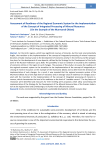
Статья научная
For the Arctic regions, which have significant reserves of minerals, but the most environmentally fragile, the transition to the implementation of the concept of integrated processing of mineral resources becomes critically necessary due to the development of economic activity in this territory and the prospective plans for the development of new deposits, defined by the Strategy for the Development of the Arctic Zone of the Russian Federation up to 2035. The possibility of such a transition is ensured by the readiness of economic entities in the region to such changes. The purpose of this study is to assess the readiness of the regional economic system to the transition to the implementation of the concept of integrated processing of mineral resources on the example of the Murmansk Oblast and to determine the directions of implementation of such changes. As a result, it was revealed that the regional economic system of the Murmansk Oblast has a fairly high level of resistance and an average value of readiness for changes associated with the transition to the implementation of the concept of integrated processing of mineral resources, which characterizes the level of its readiness as the level of "unstable success". The key factors of resistance were identified and measures for their levelling were proposed, which allow concretizing the implementation of the Strategy for the Development of the Mineral Resource Base of the Russian Federation at the regional level and contributing to its further more effective execution.
Бесплатно
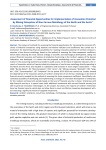
Статья научная
The analysis of methods for assessing the financial opportunities for increasing the economic efficiency of industrial enterprises using absolute and relative indicators and coefficients was carried out. A mechanism for determining financial possibilities for realizing innovative potential of northern mining enterprises of non-ferrous metallurgy, based on the method of assessing the three-component coefficient, which allows choosing the most rational strategy of scientific and technological development, taking into account financial resources and features of production functioning in the northern regions of the Russian Federation, was developed. It is shown that the proposed methodology can be used with limited information in the accounting statements provided in public access. On the basis of objective indicators, the research of innovation activity of twenty industrial enterprises of non-ferrous metallurgy directly operating in the North and the Arctic and included as subsidiaries and branches of seven largest corporations — PJSC MMC “Norilsk Nickel”, JSC “Mine Karalveem”, PJSC “Acron”, JSC “Mining company “Berelekh”, PJSC “Seligdar”, OJSC “Susumanzoloto”, JSC “Polymetal” for the period 2013–2019 was carried out. Studies showed the dependence of the innovation activity of northern enterprises of non-ferrous metallurgy on the level of financial security revealed by the method of assessing the three-component coefficient. Scientifically substantiated possibility of developing and implementing a strategy of innovation development of enterprises for the medium and long term periods based on the level of financial security is shown. Enterprises with high financial security or in special cases (with additional investments with normal financial security) are able to generate innovation technologies. As the analysis has shown, the majority of northern enterprises have low financial security, which does not allow them to count on effective innovative development without attracting a significant amount of targeted investments.
Бесплатно
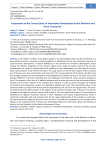
Assessment of the Current State of Innovative Development of the Northern and Arctic Territories
Статья научная
In the modern realities of the global change in the technological order and the emergence of a post-industrial society, innovative activity strengthens its significance as the most important resource for socio-economic development. Territorial differences in the potential for innovative development, which impede the effective integration of the northern regions into a single innovation system of the country, predetermine the need for a deep study of the problems of their development and the study of the main factors and prospects in the field of innovation. The study focuses on the northern regions of the European part of Russia, since they concentrate more than half of the human potential of the North and determine the strategic prospects for the development and strengthening of national security in the Arctic zone of the Russian Federation in the face of existing risks and challenges: environmental, social, economic and geopolitical. The purpose of this work is to identify prospects and to assess the current state of innovative development of the northern regions of the European part of Russia. In order to achieve the goal, the methods of statistical and comparative analysis, the dialectical method were used. The informational basis of the study was made up of data from Rosstat and the departmental civil service at the regional level. The analysis demonstrates the differentiation of the regions of the northern European part of Russia at the level of innovation and regional economic systems that include it. The most important prospect of overcoming the weaknesses of regional innovation systems is their integration and mutual complementarity, which is sometimes achievable with new systemic tools for the spatial organization of the economy, in particular, the special economic regime of the Arctic zone of Russia. The study was conducted on the example of five regions of the European North of Russia: the Arkhangelsk Oblast, the Murmansk Oblast, the Republic of Karelia, the Komi Republic and the Nenets Autonomous Okrug.
Бесплатно
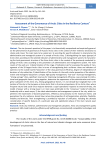
Assessment of the Governance of Arctic Cities in the Resilience Context
Статья научная
The aim (research question) of the paper is to theoretically comprehend and empirically generalize the phenomenon of governance of Russia's Arctic cities in the context of their resilience (resistance to shocks and crises). The main tasks to be solved are: 1) searching for specific indicators to characterize the administrative and managerial system of a sample of Arctic cities; 2) distinguishing the types (groups) of Arctic cities according to the selected indicators of administrative and management system; 3) characterizing the local government structure of the three Arctic cities in the context of the previously conducted typology of Arctic cities according to the parameters of administrative and management system. The main results of the work are: 1) determination of the range of indicators (six) for assessing the quality of management of the 29 largest Arctic cities in terms of strengthening their resilience: these are indicators of openness to the outside world (“basicness” of the city); governance efficiency, degree of independence of decisions of city authorities; 2) identification of five clusters of cities with similar properties of the administrative and managerial subsystem: compact high-quality management, “low-cost” municipal management, “strong average” cities, significant reserves for improving management efficiency, case-anomaly; 3) institutional and geographic factors, acting together, determine the appearance of the administrative and managerial subsystem of the Arctic city. Among geographical factors, it is not latitude but longitude that is the location of the city in the European or Asian Arctic that is of primary importance; 4) For Arctic cities, where frequent natural and social force majeure demands a super-operational response to external threats, the model of power with a strong mayor is in most cases preferable to the “consensus” model of collective leadership with a weak mayor; 5) the ideal administrative and management system of the city, which implements the imperatives of basicness/openness, efficiency and autonomy to the maximum extent, and guarantees the city resilience, should have nature-like properties of self-organization, plasticity, flexibility, mobility and diversity. Their strengthening is provided by rejection of unification, including the ultimate consideration of specific features of a particular type and exploitation phase of the main natural asset nearest to the city.
Бесплатно
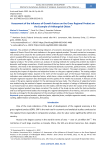
Статья научная
The problem of differentiating indicators of economic development is relevant not only for the regions of Russia. One of the main indicators is the gross regional product. The work carried out a comparative analysis of its values for the constituent entities of the Russian Federation, the United States and China, which revealed differences by tens, and sometimes hundreds of times. In most cases, this is due to the specifics of a particular region. The aim of the work is to assess the influence of regional factors on the gross regional product. The article presents an analysis of existing methods for solving this problem by modern domestic and foreign researchers. A brief overview of the key factors used in the proposed models is given. However, the trends in the development of the world and domestic economies, political events, restrictions imposed by the pandemic, regional peculiarities leave this issue relevant. The paper proposes a model for assessing the impact of objective and subjective factors on the gross regional product. The testing subject was the Arkhangelsk Oblast, located in the north of the European part of the Russian Federation. Seven indicators were selected as objective factors, which have a close correlation with the resulting indicator. A multiple regression equation was developed and the quality of the model was assessed. A forecast of the values of the gross regional product for the planning period was made. The influence of subjective factors was studied using the method of expert assessments through the analysis of ratings of influential agencies. A correction factor has been introduced into the model, with the help of which the values of the volume of the gross regional product have been corrected. The results of the study can be useful for state authorities and local self-government bodies that manage the regional development of territories, and can be used to develop a strategy for the development of the constituent entities of the Russian Federation.
Бесплатно
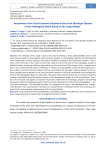
Статья научная
The relevance of this study is due to the need to develop a fairly understandable and in some sense universal tool for assessing the socio-economic situation in municipalities (districts and settlements) with pronounced territorial specifics, with clearly insufficient statistical and information support. The authors, with references to the results of their own research and to the work of their colleagues, present a detailed analysis of the key problems characteristic of the territories of the Russian Arctic, compare them with a set of main external factors of influence in relation to municipalities. Using the SEER expert procedure scheme and the hierarchy analysis method, according to the two-level model proposed by the authors, complex point estimates of the socio-economic situation in the Arctic settlements and municipal districts of the Arkhangelsk Oblast are calculated. The paper notes that the factors that are directly related to transport accessibility have the greatest impact on the development targets of Arctic municipalities. Therefore, the transport and logistics component should be fundamental in all strategic, program and planning documents aimed at achieving the goals of socio-economic development of the Arctic municipalities — districts and settlements. The obtained estimates are proposed to be used in the development of management decisions that could become the basis of a comprehensive interdepartmental inter-municipal program for the socio-economic development of Arctic municipalities.
Бесплатно
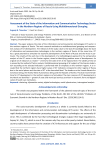
Статья научная
The paper analyzes the state of the information and communication technologies (ICT) sector in the northern regions of Russia. The main research methods are multidimensional grouping and comparative analysis of ICT development. The relevance of the study is due to the lack of knowledge about the state of information and communication technologies in the northern regions of Russia. At the same time, ICT has a great potential to stimulate the economic development of the North of Russia and the Arctic in particular. The novelty of the work lies in the development of a methodological approach to the comparative analysis of the ICT sector in the Russian regions, aimed at identifying problem areas of development. An original set of indicators is created — criteria for the state of ICT at the regional level. The validity of this set is proved by the method of factor analysis. Multidimensional grouping of all subjects of the Russian Federation according to the selected indicators is performed with an emphasis on the northern regions. It is revealed that the northern regions have higher values of ICT indicators compared to other regions of Russia due to the social sphere and the state of ICT at the household level. The leaders are the Yamalo-Nenets Autonomous Okrug, the Khanty-Mansi Autonomous Okrug and the Republic of Karelia. Practical recommendations for ICT development in the northern regions are formulated. The main reserves of ICT development in the North are identified — growth of state and municipal services provision in electronic form and digitalization of health care institutions.
Бесплатно
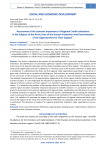
Статья научная
The article is devoted to the analysis of the banking sector in the Arctic regions of the Russian Federation, the identification of systemically significant regional credit organizations in the subjects of the Arctic zone of the Russian Federation and the study of possible areas of their support. The dynamics of existing credit organizations and their subdivisions in the Arctic zone of the Russian Federation in 2020-2021 is considered. It is determined that there are five regional credit organizations operating in nine Arctic regions now, of which one is a private non-banking one. Their activities are mainly aimed at the development of the real sector of the economy of the home region, at lending to small and medium-sized businesses. The detailed characteristics of the regional banks registered in the Arctic regions and the indicators of their activity are given. It is concluded that the allocation of significant banking structures for the functioning of regional economic systems and their support is an important issue in the analysis of the modern banking system. It is noted that the problem of developing criteria for identifying systemically significant banks for specific regions has been repeatedly raised and discussed in scientific research. It is concluded that for the practical assessment of the systemic significance of regional banks, modification and refinement of currently existing methods are required. The article offers the author's methodology for calculating the indicators used in assessing the systemic significance of a regional credit institution for a subject of the Russian Federation. The indicators of assessing the degree of systemic significance of regional commercial banks registered in the regions of the Arctic zone of the Russian Federation are calculated, and their score assessment is performed. The directions of support for regional systemically important credit organizations are presented.
Бесплатно
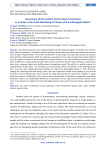
Статья научная
Since 2016, Russia has been implementing the priority federal program “Formation of a Comfortable Urban Environment”. During this period, significant funds have been spent and hundreds of improvement projects implemented in the urban environment in both large and small cities across the country. How did these improvements affect the subjective assessment of the urban environment among citizens? Are the residents involved in the development of these projects, or are they indifferent to these topics? Is there a difference in assessing the quality of the urban environment by the citizens between small and medium cities, company towns and multifunctional metropolitan areas? The article is a partial analysis of a comprehensive study’s data, “The Formation of a Comfortable Urban Environment in the Arkhangelsk Oblast”. The survey was conducted among residents of 5 cities of the Arkhangelsk oblast (n = 793). The methodology for assessing social well-being is used. The cities studied are varied in the typology of size and the dominant form of employment. The results of the study demonstrate the interest of residents in implementation projects. Assessment of the current urban environment is recorded as moderately unsatisfied. Moreover, there is no fundamental difference in assessments of the urban environment’s current conditions in the opinions of residents of small and single-industry towns and citizens of a large, regional center city.
Бесплатно
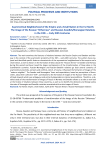
Статья научная
The work examines the features of relations between the Russian Empire and Sweden and Norway in the context of the asymmetric proximity of the 19th - early 20th centuries. The authors have analyzed and identified specific features characteristic of the asymmetrical neighborhood of the empire and a small nation, as well as factors in the formation of ideas about the “Russian threat” to Sweden and Norway during this period and have traced the stages and dynamics of the transformation of these ideas in the Scandinavian countries. Russian-Norwegian and Russian-Swedish relations go back several centuries of asymmetrical proximity, contacts and conflicts, which, of course, influenced the formation of images of the “eastern neighbor”. The Swedes and Norwegians’ fears and expectations, based on perceptions of themselves, about their collective “Self”, contributed to the formation of images of the Russian “Otherness”, the attitude towards which was ambiguous and primarily depended on internal preconditions. Therefore, a detailed study of the transformation of images of Russia in Norway and Sweden allows us to take a new look at the history of relations between these countries, as well as to identify the domestic and foreign policy interests of Norwegian and Swedish societies associated with certain images of Russia.
Бесплатно
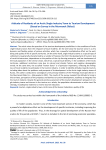
Статья научная
The article raises the question of the tourism development possibilities in the conditions of Arctic single-industry towns from the viewpoint of local residents. On the one hand, the tourism sector is a very dynamic and flexible system of various activities, which has a powerful multiplicative effect on the well-being and quality of life of specific territories. On the other hand, single-industry towns as a special type of settlement are generally characterized by a number of features that limit the development of tourism: lack of social infrastructure, dependence on the position of the city-forming enterprise, and low involvement of the local population in the service sector, which has a special local identity. In the conditions of the Arctic territories, additional restrictions arise due to natural and climatic factors and negative demographic trends. At the same time, the so-called “human factor” is of particular importance, reflecting the willingness of local residents to participate in the tourism industry. In order to identify attitudes towards tourism, including ideas about the problems and prospects of its development in the Arctic single-industry towns of Russia, the authors conducted a sociological survey among residents of the Pechenga municipal district in the Murmansk Oblast (n = 456 people) in 2021. The results of the survey revealed the attitude to living in this territory, perceptions of the prospects and barriers to tourism development, readiness to integrate into the tourism industry. Despite the general positive assessment of the tourism development prospects in single-industry towns and interest in the tourism as a whole, the population demonstrates a rather inert life strategy, including low readiness to receive tourism education.
Бесплатно
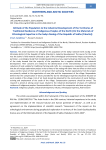
Статья научная
The article examines the attitude of the population of the Sadyn national Evenk nasleg of the Mirninskiy district of the Republic of Sakha (Yakutia) to industrial development. The source for the study was the author’s field material collected as part of the ethnological environmental impact assessment; in particular, a sociological study that included questionnaire survey, expert and group interviews. The results of the study showed that the majority of the population has a negative attitude to the industrial development. Their concerns are related to the deterioration of the environmental situation and the reduction of land suitable for traditional farming and crafts. As a consequence, respondents are confident that the oil and gas exploration project in the territory of the nasleg will either have no effect on their social status and the nature of their work or will worsen their well-being. Positive expectations from the project are primarily related to the organization of new jobs and the improvement of the village. Respondents believe that the compensation of losses provided for by the ethnological expertise should be focused on each resident of the village. First of all, funds should be allocated for the construction of social facilities, training and employment of the youth of the village. Compensation payments should be annual. The research is aimed at solving social issues related to the industrial development of places of traditional residence of indigenous peoples. Recommendations in the search for compromise solutions are given.
Бесплатно
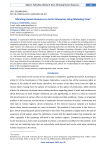
Attracting human resources to arctic enterprises using marketing tools
Статья научная
In connection with the movement of various types of production in the Arctic region, it becomes necessary to attract human resources to new enterprises. In the article, we analyze the branding system in companies operating in the Arctic region, as one of the most effective areas in marketing activities in the labor market. The study aims at investigating marketing tools that can eliminate the lack of qualified personnel in well-known companies, e.g., Rosatom, Rosneft, PhosAgro, Eurochem, Novatek, Lukoil, Severstal, Gazprom Neft, and Norilsk Nickel. Particular attention is paid to analyzing the branding of organizations, i.e., the main tool for attracting human capital to enterprises. The components of branding are considered, i.e., the brand itself, mission, purpose, and image. A table was compiled illustrating the listed elements for each company. It takes a detailed look at which companies should try to change branding elements to attract more attention from job seekers. The study of the key concepts of branding helped to draw appropriate conclusions about the need to reform marketing tools, which are not developed to one degree or another in the investigated companies.
Бесплатно

